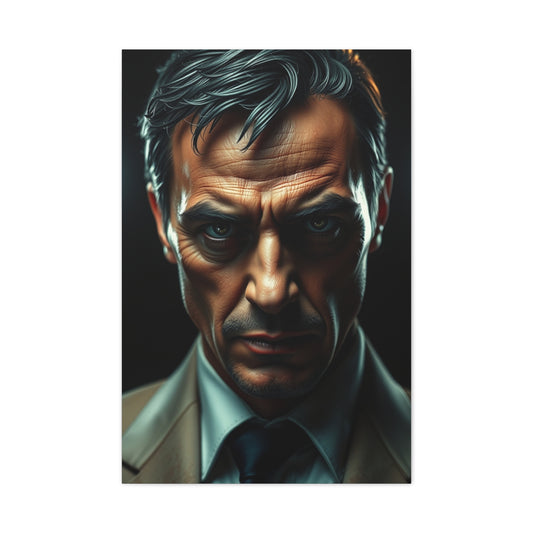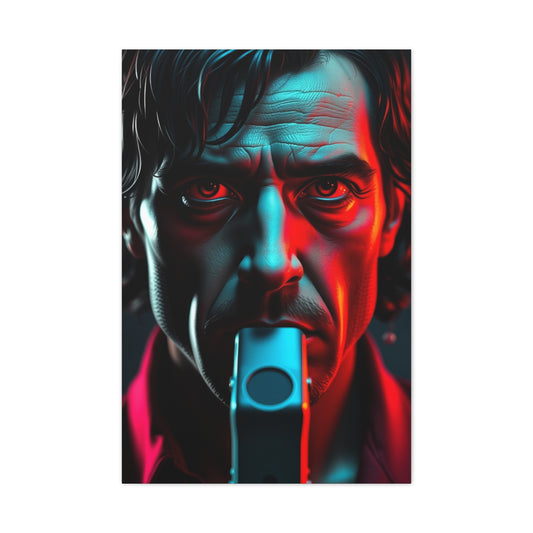Forced perspective photography is an optical illusion technique that plays with the viewer's perception of size and distance by manipulating the angle and position of objects within a frame. It’s an incredibly fun and simple technique that can turn ordinary scenes into mind-bending, whimsical shots. A famous example of this would be the classic tourist photo where someone is shown "holding" the Leaning Tower of Pisa.
By changing your perspective, you can transform small objects into giants, shrink large buildings, or even make something floating appear suspended in the air. Whether you're a seasoned photographer or just starting out, forced perspective is a great way to experiment with your creativity and add some fun illusions to your photography. Let’s explore 18 creative forced perspective photography ideas that will help you create captivating and surreal shots.
1. Seek Inspiration from Online Forced Perspective Photos
If you're new to the world of forced perspective photography, or simply looking for fresh ideas to fuel your creativity, the internet is a goldmine of inspiration. A simple search for "forced perspective" on platforms like Google, Pinterest, or Instagram will provide a wide variety of examples showcasing the imaginative potential of this optical illusion technique. There are endless possibilities for what you can create—people seemingly holding the moon, tiny toys towering over cities, and objects that appear to defy the laws of physics.
By browsing through these images, you'll not only find inspiration but also gain an understanding of what works well in forced perspective photography. Analyzing how others compose their shots and use props can teach you a lot about what makes an illusion successful. You can look for common patterns in these images—like the placement of the subjects, the background elements, and how light is used to enhance the illusion. Understanding these elements will help you visualize your own projects more clearly. Whether you're aiming for humor or awe, looking at examples of forced perspective photography will inspire new ideas and teach you how to think outside the box.
|
Related Catagories: |
2. Plan Your Scene for a Realistic Illusion
Once you've found some inspiration, planning your forced perspective shoot is crucial. Creating a realistic illusion takes a lot more than just snapping a photo; it requires careful attention to detail and proper setup. You need to consider everything in the scene, including how to position both the subject and the camera. The relationship between the foreground and background is key to a successful forced perspective shot. For instance, objects in the foreground should appear much larger than those in the background. This positioning needs to be calculated with precision to create a believable optical illusion.
To begin, scout the location ahead of time and think about how you can set up the elements within the frame. If your concept involves a person appearing to hold up a giant object like the Leaning Tower of Pisa, find a location with the right props, such as a large object or a clear backdrop. It's essential that your subjects and props are in the perfect spots to create the illusion you're aiming for. If you're shooting outdoors, keep an eye on your surroundings—will the sun create shadows that affect the shot, or will there be objects in the frame that distract from your illusion? By thinking ahead, you can make adjustments to avoid common pitfalls and ensure that your forced perspective shots are as effective as possible.
3. Take Test Shots Before the Real Shoot
While planning is essential, sometimes the real magic of forced perspective photography reveals itself when you experiment with the scene in real time. After you’ve envisioned the shot, it’s always a good idea to take a few test shots to make sure everything works as planned. You can do this at home if you're testing ideas with small props, or in the field if you're shooting outdoor scenes. Test shots will give you a better understanding of how your scene is coming together. They allow you to see how the elements interact and whether the illusion appears as expected.
During these test shots, pay attention to the placement of both the subject and the camera. Are the proportions right, and does the size distortion look realistic? This is where you can fine-tune your approach. Test out different angles, move your subjects slightly, or reposition the camera to see how the illusion changes. It’s essential to review your test shots on the camera screen and make adjustments to things like framing, lighting, and even the size of props. By doing this in advance, you'll save time on the actual shoot day and ensure you capture the perfect final image.
4. Experiment with a Zoom Lens for Perspective Manipulation
One of the most useful tools in forced perspective photography is the zoom lens. Unlike a fixed lens, a zoom lens offers flexibility by allowing you to adjust the framing and composition without needing to physically move closer or farther away from your subject. This is extremely helpful when you need to manipulate the perspective for an illusion, as it allows you to reframe your shot easily. A zoom lens enables you to control the scale and positioning of both the foreground and background subjects, which is vital for creating the optical illusion.
However, it's essential to use the right focal length. A wide-angle lens (under 35mm) may cause too much distortion, making the illusion less effective. Instead, use a moderate to long zoom lens to keep the perspective distortion more controlled. The ability to zoom in or out helps you fine-tune the scene, and it provides more flexibility for creating the perfect forced perspective shot. Whether you're photographing a toy that looks like a giant or a person that appears to be holding a large building, using a zoom lens allows you to adapt quickly to changes in your scene without disrupting the illusion.
In addition to the zoom lens, experiment with other lenses, such as telephoto or prime lenses, to see how they alter your perspective. Each lens offers its own unique characteristics that can enhance or challenge the effectiveness of the illusion.
5. Adjust Your Aperture for the Desired Effect
When it comes to forced perspective photography, achieving the right level of sharpness and focus is crucial for creating a realistic optical illusion. Forced perspective often involves two distinct points of interest in your shot: a subject in the foreground and another in the background. To make both of these subjects appear in sharp focus and maintain a natural illusion, a wide depth of field is often necessary. One way to achieve this is by using a small aperture, typically between f/8 and f/16. These settings ensure that both the foreground and background elements remain crisp and well-defined, which is essential for conveying the depth of field required for a strong forced perspective effect.
However, depending on your creative vision, you might prefer a more dreamlike or surreal effect. If your aim is to draw attention to the subject in the foreground while subtly blurring the background, a larger aperture is the way to go. Apertures between f/1.2 and f/2.8 will help you achieve a shallow depth of field, creating a soft, bokeh-filled backdrop that emphasizes the main subject. This technique can be particularly effective when you want to isolate the key elements in your composition while still maintaining the illusion of size and perspective. By experimenting with different aperture settings, you can control the focus and create a mood that enhances the overall visual impact of your forced perspective shot.
When using a shallow depth of field, it's important to be mindful of your focus point. A slight shift in focus can cause parts of your image to appear blurry or distorted, which can disrupt the illusion. Using manual focus might be more effective in these situations to ensure your foreground and background elements are properly aligned and crisp.
6. Collaborate with a Partner to Perfect the Shot
While forced perspective photography is a solo endeavor in terms of the artistic direction and camera settings, it often requires collaboration with another person to execute the illusion successfully. For many forced perspective shots, one subject will be positioned in the foreground, and another in the background. Achieving the perfect alignment between these subjects can be difficult without the help of a partner.
When planning a shot that involves multiple subjects, clear communication with your partner is essential. You will need to explain the concept, how the subjects should interact, and what their role in the shot is. It’s helpful to use reference photos or sketches to give your partner a visual understanding of the desired effect. Patience and trial and error are necessary for getting the perfect shot, as positioning each person in relation to the camera and the background takes time.
For example, if you’re trying to create a shot where your partner appears to hold up a large object, you’ll need to guide them carefully. They might need to move forward, backward, or sideways in order to align perfectly with the camera angle. You may also need to adjust the camera itself to ensure that the illusion works from that particular viewpoint. This back-and-forth can take some time, but with persistence and good communication, you’ll be able to perfect the scene and create a seamless forced perspective image.
Additionally, collaborating with a partner can help you capture more dynamic shots. You can experiment with different poses, emotions, or interactions between subjects to enhance the overall story you're trying to tell. Whether it's a whimsical shot of someone "holding" a distant mountain or a dramatic perspective of a tiny person standing under a giant tree, working together allows for more variety in your forced perspective compositions.
7. Bring Abstract Ideas to Life with Forced Perspective
One of the most exciting aspects of forced perspective photography is its ability to bring abstract, imaginative ideas to life. Rather than being confined to realistic representations of space and size, forced perspective allows you to create scenes that transcend the ordinary and tap into more conceptual themes. For example, you could design a scene where a person seems to be “catching” the sunset or holding an entire city in their hand. These types of creative and surreal shots open up the possibility of exploring abstract concepts like time, love, or even emotions in a visual form.
By playing with the scale and distance of objects, forced perspective photography allows you to tell stories that wouldn’t be possible in the real world. For instance, you could portray someone "reaching" for the stars or sitting inside an oversized teacup. These types of shots not only challenge the viewer's perception of reality but also create powerful metaphors for concepts like yearning, ambition, or nostalgia.
Incorporating abstract ideas into your forced perspective work can push the boundaries of traditional photography. You can experiment with unusual objects, settings, and poses to convey deeper meanings or simply have fun with quirky, imaginative visuals. The beauty of forced perspective lies in its flexibility and its capacity to transform mundane scenes into dreamlike narratives. So, whether you're exploring personal themes or creating whimsical shots, forced perspective opens up endless possibilities for abstract photography.
8. Incorporate Light to Enhance the Illusion
Lighting plays a vital role in any type of photography, but in forced perspective shots, light becomes a powerful tool for enhancing the illusion. By strategically using light, you can manipulate how objects appear in your frame and make your optical illusion even more convincing. One of the most common techniques is using bokeh or circular light effects in the foreground, which can add an ethereal, dream-like quality to your images. This soft, blurred light can interact with your subjects, enhancing the sense of scale and depth in your shot.
For example, you might create a scene where the bokeh circles in the foreground appear to interact with a tiny toy or object in the background, giving the illusion that the object is much larger than it really is. Alternatively, you can use light and shadow to create more contrast between the foreground and background, further emphasizing the size difference and the optical illusion. Experiment with various light sources such as natural sunlight, artificial lighting, or even streetlights, as each can create a unique effect in your image.
In addition to creating bokeh effects, you can also use lighting to highlight specific parts of the frame. For example, if you're photographing someone holding a giant object, you might position a light source to cast dramatic shadows, making the subject appear more imposing and creating depth in the scene. Alternatively, backlighting can be used to create a silhouette effect, making the illusion more striking.
By experimenting with different types of light and their positioning, you can refine the forced perspective illusion and take your creativity to new heights. Light, when used thoughtfully, has the power to transform a simple optical illusion into a mesmerizing and visually dynamic photograph.
9. Use Composition to Strengthen the Illusion
In forced perspective photography, composition is a vital element in ensuring the illusion works seamlessly. Composition isn’t just about placing the subject in the frame; it’s about strategically arranging the visual elements in a way that strengthens the perspective distortion. The most important aspect of composition in forced perspective is the placement of your subjects. Larger objects should always be placed in the foreground, while smaller objects should be positioned in the background. This creates the illusion of size difference, where an object in the foreground will appear much larger than one in the background.
To further enhance the effect, applying the rule of thirds can help create a balanced and engaging shot. When you divide your frame into nine equal parts by two equally spaced horizontal and vertical lines, placing your subject along these lines or at the intersections can make the image more dynamic. By aligning your subject with one of these grid lines, you can ensure the viewer’s eye is drawn naturally to the important parts of the shot.
Additionally, zooming in or out can help you maintain the flow of the composition. Zooming in allows you to emphasize the foreground subject, while zooming out can help you align the elements in the frame to create a more harmonious perspective. The goal is to create a scene where the illusion is convincing, and the viewer's attention is guided naturally from the foreground to the background without any distraction. A well-composed forced perspective image will leave the viewer in awe of the creativity, while maintaining the integrity of the illusion.
By paying attention to the composition, you ensure that the optical illusion holds up when the viewer looks at the photograph. A poorly composed shot can break the illusion and make it obvious that something is amiss. Consider the relationships between foreground and background objects and ensure that both interact in a way that supports the forced perspective illusion.
|
Related Catagories: |
10. Experiment with Angles to Add Depth
The angle from which you photograph plays an essential role in forced perspective photography. The way you position your camera can significantly influence the perceived distance, size, and depth of objects in your frame. Experimenting with angles will allow you to control how your viewers interpret the scene, adding an extra layer of complexity and drama to your illusion.
When you want the foreground and background to blend seamlessly, shooting from a low angle can be highly effective. A low vantage point will stretch the perspective, making objects in the background appear much larger in comparison to those in the foreground. This technique works particularly well when you want to make an object in the background seem monumental while keeping your foreground subject relatively small. It’s an excellent way to exaggerate the size difference and create an impactful illusion of distance.
Alternatively, shooting from a higher vantage point can add depth to the scene, helping to further emphasize the size difference between your foreground and background subjects. The upward angle will create the illusion that the background objects are far away and towering over the foreground subjects. In this case, the distortion between the size of objects will appear more dramatic, which can be particularly effective for creating a sense of awe or whimsy in the shot.
Another technique is adjusting the tilt of your camera to manipulate how the foreground and background interact. A slight tilt can change how the objects appear in relation to each other, which can drastically affect the perceived distance. By experimenting with camera tilt, you can add an additional dimension to the forced perspective illusion, giving your photograph a more dynamic, three-dimensional effect. Playing with angles can also help you create surreal and dreamlike scenes that challenge the viewer’s perception of reality.
Ultimately, the choice of angle will depend on the specific illusion you wish to create. A well-thought-out angle will make your forced perspective shot more convincing, and it will allow you to control the depth and scale of your subjects. So, don’t be afraid to get low to the ground, climb to a higher vantage point, or experiment with different tilts to see how they affect the illusion. The right angle can elevate your forced perspective photography to the next level.
11. Use a Tilt-Shift Lens for Miniature Effects
One of the most fascinating tools for creating forced perspective shots is the tilt-shift lens. This specialized lens allows photographers to manipulate the plane of focus, which results in a unique optical effect: making real-life scenes appear like miniature models. Tilt-shift lenses are particularly effective when photographing cityscapes, large outdoor spaces, or anything that involves a wide view. By applying this lens, you can make a bustling city street look like a tiny model of a toy town.
The tilt-shift lens works by tilting and shifting the lens in relation to the image sensor, allowing you to control the plane of focus. Normally, when you focus on a subject, the entire scene from front to back is in focus (depending on aperture settings). With a tilt-shift lens, you can shift the focus to a specific part of the scene, blurring everything else. This selective focus creates the illusion of a miniature model, as it simulates the shallow depth of field typically seen in photographs of small objects.
The effect produced by a tilt-shift lens is both fun and striking. When photographing large buildings, busy streets, or expansive landscapes, the lens can make the scene look like something straight out of a model train set. The ability to create this illusion can add a whimsical or surreal quality to your forced perspective shots. It also opens up opportunities for more creative approaches to everyday scenes, turning them into something extraordinary and unexpected.
Tilt-shift lenses are not just for outdoor scenes—they can be used in other forced perspective compositions to create a miniaturized look. Whether you are shooting portraits with oversized props or attempting to make a vast landscape look small and playful, this lens can add an entirely new dimension to your work. If you're looking for a way to truly push the boundaries of forced perspective photography, investing in a tilt-shift lens will allow you to experiment with this fun and fascinating effect.
12. Line Everything Up for a Two-Dimensional Effect
Sometimes, the goal of forced perspective photography is not to create depth but to create a flat, two-dimensional appearance. This type of illusion works well when you want everything in your shot to appear as if it’s all on one plane, which is an interesting challenge for forced perspective photography. To achieve this, you must carefully line up your subject and the background so they appear to exist on the same level.
The key to creating a two-dimensional effect is to keep everything in the same relative plane. For example, if you want a toy in the foreground to appear to have the same size as a building in the background, you must align the camera, the toy, and the building so they share the same focal plane. The result is an image where the foreground and background objects appear flat, with little to no visible depth.
Achieving a convincing two-dimensional forced perspective effect requires precision and careful planning. Your subjects need to be perfectly aligned, and the camera should be positioned so that everything appears on the same visual plane. Even a slight shift in angle can disrupt the illusion and give away the trick. To help with alignment, consider using a tripod to keep the camera steady and locked in place while you adjust the positioning of your subjects.
In this approach, you’ll want to avoid shifting your angle too much, as this could reveal the true depth of the scene. You’ll also need to be mindful of any visual elements that might break the illusion, such as shadows or lines in the background that suggest depth. By keeping everything flat and well-aligned, you can create an image that appears almost like a cut-out or a two-dimensional scene.
This technique works particularly well for whimsical, surreal, or abstract compositions. It can also be a fun way to play with perspective and create a unique visual experience for your audience. Experiment with this two-dimensional effect to challenge your own perception of space and dimension in photography.
13. Interact with the Environment to Create Depth
The environment around you plays an important role in creating the illusion of depth in forced perspective photography. By carefully choosing your backdrop and surroundings, you can manipulate how your viewer perceives the distance between objects in the scene. Streets, sidewalks, and flat surfaces are often ideal for forced perspective because they provide a consistent, level plane that helps exaggerate the sense of scale in your shot.
One way to enhance depth is by interacting with architectural features. For example, positioning a subject near a window or door can create a sense of foreground versus background that emphasizes the size difference between objects. Similarly, benches, lampposts, or even pillars can be creatively used to further enhance the illusion. By positioning the subject in a way that interacts with these elements, you create a dynamic scene where the scale seems to shift dramatically depending on where the viewer’s eye is drawn.
When shooting in an environment with a lot of architectural elements, think about how these structures can interact with your subjects. A person sitting on a bench, for instance, may appear much smaller than a building or large tree in the background, but when viewed from the right angle, you can make the person seem to be interacting with the object. The key is to choose your location wisely and consider how the architecture’s scale and placement in the frame can contribute to your perspective. Even small shifts in position or angle can create a powerful illusion of depth.
Additionally, outdoor environments, such as long roads or narrow alleys, can add linear perspective to your images. These environments create converging lines that can help emphasize the scale of foreground subjects and draw the viewer’s eye into the scene. When photographing on a street or near tall structures, the way you angle your camera can enhance the depth of the scene and increase the dramatic effect of forced perspective. By carefully managing the interaction between your subject and the surrounding elements, you can manipulate the viewer’s sense of scale and distance to create a more striking and immersive image.
14. Use Toys for Fun, Whimsical Shots
Toys are one of the most fun and accessible props for forced perspective photography. Because of their small size, toys are ideal for creating an illusion of exaggerated size, which can make them seem much larger than life when placed in the foreground. Toys can be used to add whimsy and charm to your forced perspective shots, making them both playful and engaging. The contrast between a tiny toy and a larger background subject can produce a delightful effect that invites curiosity and wonder from viewers.
To create a successful toy-based forced perspective shot, experiment with various types of toys—action figures, dolls, plush animals, or even small vehicles. Place these toys in the foreground and position your background subjects, like buildings or landscapes, farther away to make them appear smaller. For example, you can make it look like a tiny toy dinosaur is towering over a vast cityscape, or a toy airplane appears to be flying in front of a large monument.
When positioning your toys, it’s essential to consider the angle and framing. The toy should be placed close to the camera, while the background subject should be positioned further back to emphasize the size difference. You may need to adjust the toy’s position or angle to ensure it aligns with the background and creates the illusion you want to convey. Don’t be afraid to experiment with different perspectives to see what works best.
One of the most exciting aspects of using toys in forced perspective photography is the endless possibilities for creativity. You can play with various props and backgrounds to tell a fun story or create humorous illusions. Whether it’s a toy car racing down a street or a tiny figure “lifting” a giant object, these playful shots offer a unique way to engage your audience and bring a sense of fun to your photography.
15. Incorporate Everyday Objects for Surprising Results
You don’t always need elaborate props or toys to create a successful forced perspective shot. Everyday objects can work just as well, and often, they can produce even more surprising results. Items such as lamp posts, benches, cups, and even food can all be used to create intriguing optical illusions. What makes everyday objects so powerful is that they are familiar to us, so their manipulation in forced perspective photography can be unexpectedly delightful.
For example, you can position a cup or a plate in the foreground to make it appear much larger than the rest of the scene. Similarly, you can use benches or lampposts in the background to make it look like a tiny subject is interacting with them in a surprising way. Simple objects, like shoes, a hat, or even a pen, can be used creatively to create the illusion of scale and distance. When placed strategically, these objects can completely alter the way we perceive the space in the image.
One of the benefits of using everyday objects is their accessibility. You don’t have to spend time searching for elaborate props to make your forced perspective shot work. Simply look around you and consider how ordinary items can be transformed into extraordinary optical illusions. The key is in the placement—by adjusting the distance and angle, even the most mundane objects can take on new significance and provide interesting focal points for your photograph.
Incorporating everyday objects also makes the shot feel more relatable, as viewers can immediately recognize the items in the image. The surprise element comes from the clever use of perspective, which tricks the eye into seeing something that isn’t actually there. It’s this sense of surprise that makes forced perspective photography so enjoyable for both the photographer and the viewer.
16. Create the Illusion of Floating Objects
Creating the illusion of floating objects is one of the most fascinating and playful tricks in forced perspective photography. By carefully adjusting the positioning and angle of objects, you can make them appear as though they are floating in mid-air, defying gravity. This effect can be achieved with simple props, such as shoes, cups, balloons, or any other light object that can be easily manipulated.
To create the illusion of floating objects, position your camera so that the object appears to be levitating against the backdrop. For example, you can place a shoe on the ground in the foreground, and with the right angle, it will appear as though it’s floating just above the ground. Another popular example is using balloons or a cup, where the object seems to be hovering without any visible support.
To enhance this illusion, make sure the subject in the background doesn’t interfere with the effect. The key is to eliminate any signs of support or manipulation. If you’re using props like shoes or cups, make sure they are positioned in such a way that the supporting elements (such as a hand or string) are hidden from view. This creates the illusion of weightlessness, leaving viewers to marvel at how the object seems to defy the laws of physics.
One way to make floating objects appear even more magical is by using light creatively. For example, adding bokeh or soft light in the background can enhance the ethereal feeling of the floating object. This technique creates a dreamlike atmosphere that draws attention to the levitating object and adds a sense of surrealism to the shot.
Whether you’re shooting indoors or outdoors, the illusion of floating objects is an engaging and fun concept that encourages viewers to think about how the shot was created. Experiment with different objects and angles to see how you can manipulate the perception of gravity and create stunning visual effects.
17. Make Your Viewers Wonder About the Illusion
One of the most rewarding aspects of forced perspective photography is making your viewers pause and wonder how the shot was achieved. A great forced perspective shot should make people ask, "How did they do that?" It’s not just about pulling off a visual trick; it’s about creating a compelling scene that intrigues and surprises the audience. The more they think about how the illusion works, the more successful your photograph will be.
To make your viewers wonder, focus on keeping your composition simple and uncluttered. The optical illusion should be the focal point of the shot, so avoid any unnecessary distractions in the background or around your subject. The cleaner and more straightforward the composition, the more impactful the illusion will be.
At the same time, don’t make the illusion too easy to figure out. You want your audience to be intrigued, not immediately able to spot the trick. This is where creativity and subtlety come into play. The less obvious the manipulation, the more exciting and engaging the shot will be.
You can also challenge the viewer’s perception by using elements that seem familiar but are manipulated in ways that defy expectation. The goal is to keep the illusion intriguing while allowing the viewer to appreciate the artistic execution behind the scene. When they finally figure out how the trick works, they’ll feel a sense of accomplishment and wonder, making the photograph even more memorable.
18. Have Fun with Forced Perspective Photography
The ultimate goal of forced perspective photography is to have fun and experiment with your creativity. The possibilities are endless, and the more you explore different techniques, the more unique and engaging your photos will become. Whether you’re using everyday props, toys, light, or your surroundings, there’s no limit to the illusions you can create.
The key is to be playful and imaginative. Don’t be afraid to think outside the box and push the boundaries of what’s possible. The more you experiment, the more you’ll learn about the potential of forced perspective photography, and the more fun you’ll have in the process. So, grab your camera, explore your environment, and let your creativity flow! You’ll be amazed at the incredible illusions you can capture.
Conclusion
Forced perspective photography is a powerful tool for creating mind-bending and visually interesting photos. With some planning, creativity, and the right techniques, you can transform ordinary scenes into extraordinary optical illusions. Whether you’re playing with angles, experimenting with props, or working with light, there are endless possibilities for what you can achieve. So grab your camera, have fun with forced perspective, and let your imagination run wild!
























